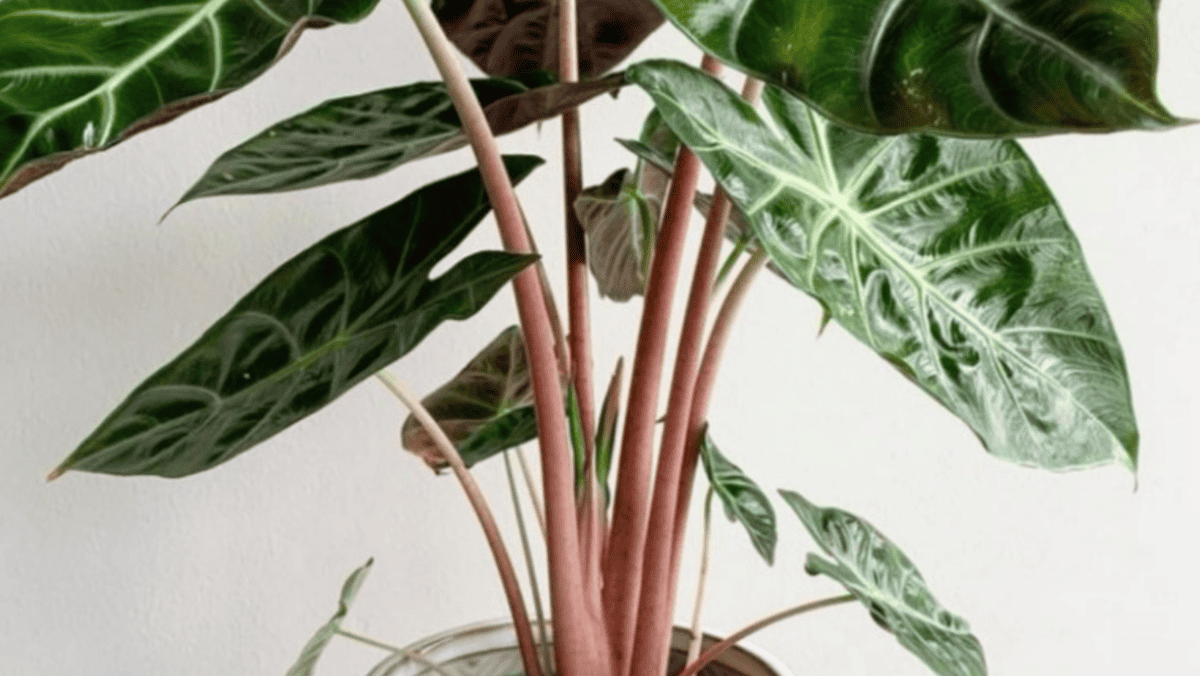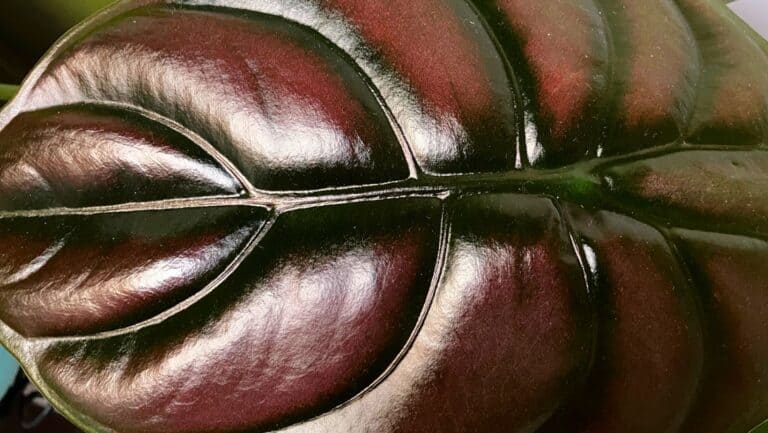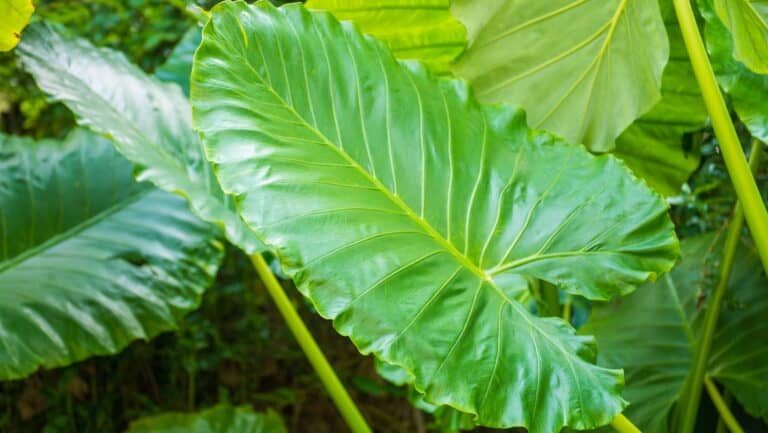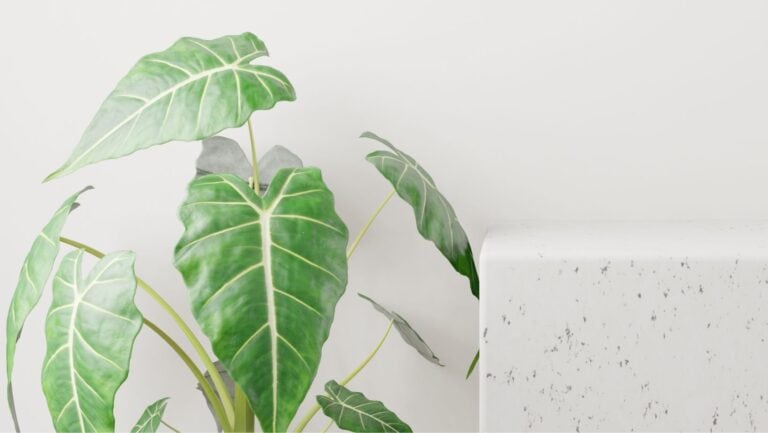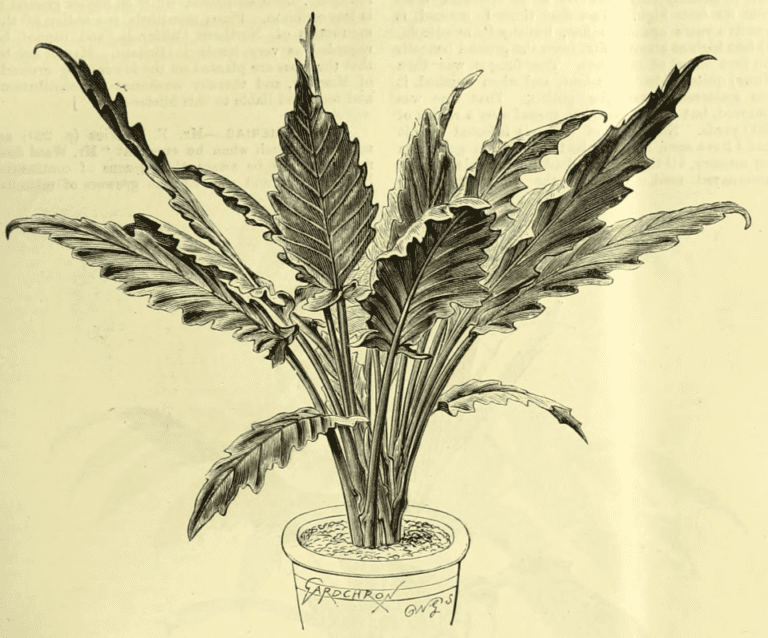Alocasia With Pink Stems: Chasing Pink Dragons and Princesses on Purple Nights
Plant marketers are very clever. Stepping into a plant nursery and reading the labels, you can easily imagine yourself in a fairy tale, with all the princesses, dragons, knights, and shields. The fancy names are also much easier to remember when you’re talking about your plant to a friend, who will quickly visit the same nursery the next day. Yes, plant marketers are very clever.
On the other hand, fancy names don’t help much when you need a little extra information about your plant (beyond the omnipresent need for ‘indirect bright light’). Like her preferred substrate or humidity requirements.
Recently, I bought that beautiful Alocasia Pink Dragon seduced by its looks, but then my inner plant nerd started asking questions about the Alocasia species behind that name. You may think, ‘Who cares? If what we call ‘Pink Dragon’ by any other name will have pink stems.’ But, that puzzle fuelled my curiosity. Thus, I began my quest to discover the true identity of the Pink Dragon.
Pink Dragon, Pink Princess, Marocco, Nairobi, Purple Nights… How Many Alocasia with Pink Petioles Are There?
I put on my detective hat and started searching for evidence. The most striking feature of the Alocasia Pink Dragon is undoubtedly its pinkish petiole.
The search for Alocasia with pink petioles surfaced a pleiad of other fancy marketing epithets: Pink Princess, Purple Nights, Nairobi Nights, Marocco… However, none of those brings us closer to the scientific name, despite creating a mysterious fairy-tale-like mood.
Thus far, the investigation only raised more questions: are all of these plants the same Alocasia species or are they different? Do they originate from the same geographical location or from various places?
Morocco and Nairobi Nights are particularly perplexing, as all Alocasia plants originally come from Australasia.
Adding to the confusion is that, based on the plant photos, these fanciful nicknames seem to be arbitrarily assigned to pink-stemmed Alocasia plants that have significant differences in foliage. You may encounter two Pink Dragons that are vastly dissimilar, or a Pink Dragon and a Pink Princess that are nearly indistinguishable.
The revised question was: what is the species of Alocasia that displays a pink petiole and exhibits a wide range of leaf shapes and colours?
It’s that variability that provided the vital clue, as there exists only one complex species of Alocasia that checks all the boxes. And the winner is…
Alocasia Longiloba: A Plant with Many Faces
Alocasia Longiloba is a true spy of the Alocasia world. It has multiple identities, and even experienced botanists distinguish only “peak types,” acknowledging the continuous variability within the Longiloba complex.
Also, Alocasia Longiloba (well, at least some of its varieties) is one of the few Alocasia that can boast pink petioles. Pink petioles are a rare and sought-after feature of Alocasia plants. Red leaves are much more common in the family, especially leaves with red undersides. But petioles are mostly green, sometimes mottled, streaked, speckled, flecked, or zebra-striped with darker shades of green, brown, or purple. But very rarely uniformly pink.
Alocasia Longiloba has been in cultivation since the 19th century, affording horticulturists ample time to stabilize its attractive traits and create numerous alluring names for their plants.

How to Care for Your Alocasia Longiloba Pink Dragon (or Any Other Alocasia Longiloba)
Now, the investigation is over, and the puzzle is solved, but what practical value does it bring?
Actually, it helps to better understand the needs of your plant. What do we know about the tastes and preferences of Alocasia Longiloba?
First, let’s talk about the substrate: Alocasia Longiloba is a terrestrial or lithophytic plant, which means it can grow in soil or on rocks. Its rhizome often creeps on the surface and it doesn’t like to be buried, so it will thrive in a well-aerated mineral substrate.
Second, the light: Most members of the Longiloba complex naturally inhabit the rainforest floor, where direct sunlight is scarce. Even those that grow on rocks are sheltered by the forest canopy.
One simple tip: a lack of light is often indicated by longer petioles. If you notice that your plant is reaching out towards the window, help her get that much-needed light.
Third, the water and humidity: Alocasia Longiloba is a terrestrial or lithophytic plant and is not found growing in the water. However, it is native to rainforests where the air humidity is high. When grown in soil, it’s important not to overwater. I personally use a mineral substrate (such as LECA or PON) and bottom watering to provide enough humidity near the roots without risking root rot from excessive moisture.
Sources:
Hay, A (1998). The genus Alocasia (Araceae-Colocasieae) in West Malesia and Sulawesi. The Gardens’ bulletin, Singapore, 50(4), 221–334.

